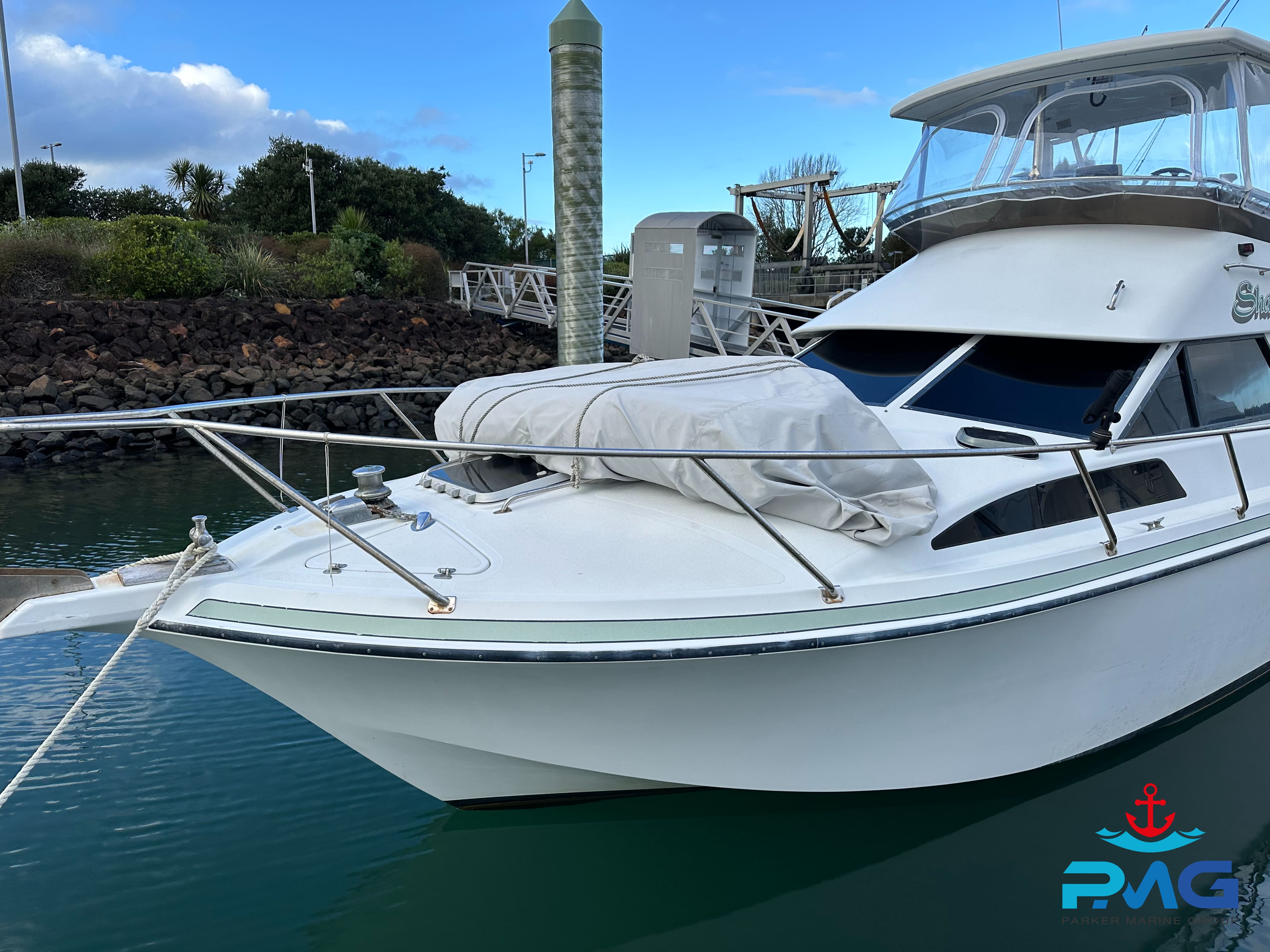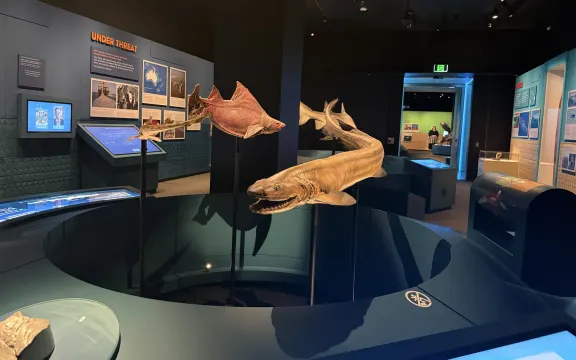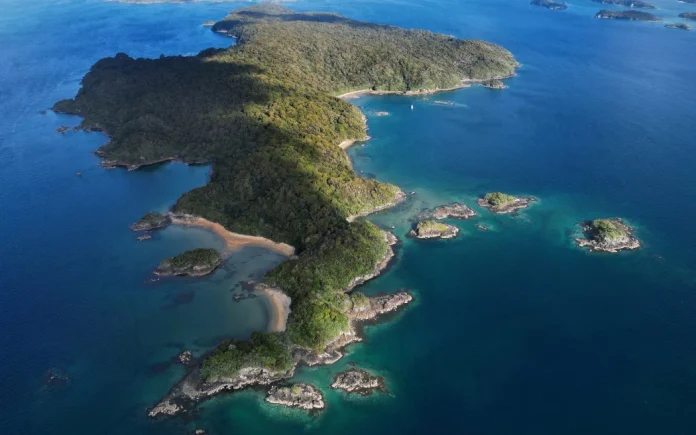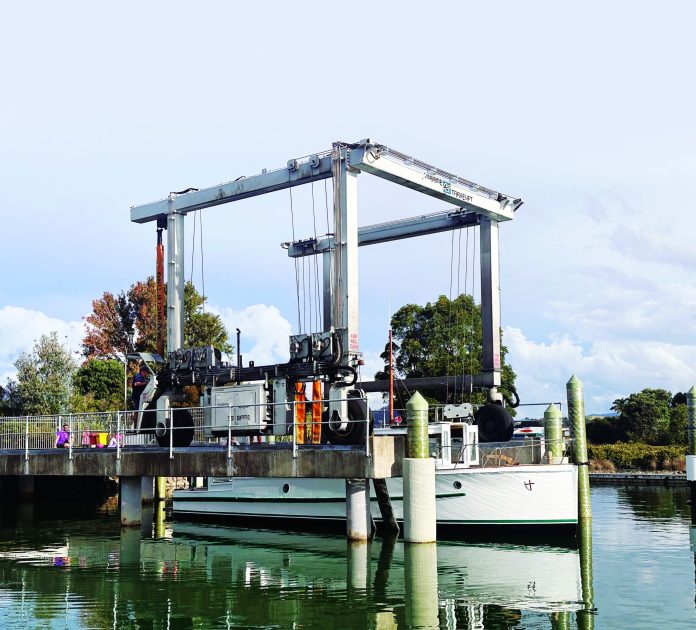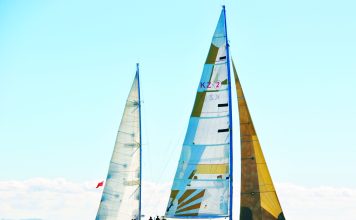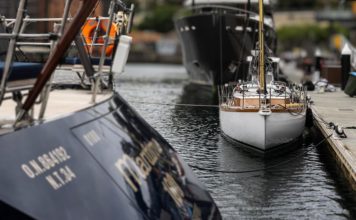In 1835 British naturalist Charles Darwin stepped ashore at the remote Galápagos Islands. The visit led to his controversial book – On the Origin of Species (1859) – about natural selection and evolution. Nearly 190 years on, the islands – largely unchanged – offer visitors a window into his ideas. Story and pictures by Lawrence Schäffler.
The Galápagos archipelago – comprising around 13 islands – belongs to Ecuador. It lies on the equator some 1,000km off South America’s west coast. At that latitude you’d expect lush, tropical vegetation, impenetrable rain forests and oppressive humidity.
The islands are anything but.

Born of wild volcanic activity, their dominant feature is solidified lava. They are bleak and arid and vegetation is sparse. The seas are frigid because the icy Humboldt current (originating near Antarctica) sweeps up through the islands. In short, an unlikely home for fauna and flora – of any sort.
But that is the paradox of the Galápagos.
The islands are teeming with life of the most extraordinary variety, the diversity more remarkable given the modest geographical footprint. The wildlife includes species that are endemic (not found anywhere else on the planet) – among them marine iguanas, giant tortoises, flightless cormorants and the Galápagos penguin.

And, as Darwin discovered, there are subtle but distinct variations within individual species – particularly noticeable among tortoises and birds on the different islands. This piqued his interest and shaped his theory that species evolve according to the environment in which they live.
The idea had profound implications for life and its evolution. That a Divine Architect might not have created all species in their final form was an outrageous, heretical notion in the conservative Victorian age. Even though it was an immediate best-seller, Darwin and his book were widely denounced.

Despite the controversy, the Origin of Species proved to be the proverbial Pandora’s Box. It transformed the emerging sciences of geology, biology and genetics and set them on a very different trajectory. Logic and scientific observation, Darwin suggested, couldn’t be ignored and were important, robust alternatives to myth, superstition and dogma.
The needle on humanity’s religious, moral and philosophical compass began to wobble.
Majestically grand
Today, the Galápagos archipelago remains a fascinating place to visit. Fiercely protected, it’s one of Ecuador’s National Parks and the best way to experience the islands is with one of the cruise vessels operating there. I visited earlier this year on board the Grand Majestic – a 39m luxury motor yacht accommodating 16 guests in eight state rooms.

She’s one of seven vessels in a fleet run by the Royal Galápagos company (www.royalgalapagos.com). It offers boutique cruises – pretty much all year round – with itineraries ranging from four to eight days. Ours was an eight-day cruise (see map on page 63) – an easy, comfortable and supremely rewarding way to explore the islands.
It’s an action-packed cruise but only as busy as you want it to be – and you don’t have to be super-fit or agile to participate. Every day involves a range of activities – guided walks on the islands, snorkeling (full wetsuits, masks and fins provided), kayaking and dinghy cruises – and, of course, a lot of sumptuous dining. You’ll leave a vessel a few kilos heavier than when you boarded.

Our crew included a guide fluent in multiple tongues, with an encyclopaedic knowledge of the fauna and flora. David provided an endless stream of fascinating (and often colourful) information.
Who knew that those ungainly, giant tortoises mate for four hours? Exhausting – no wonder they move so slowly. And spare a thought for the poor females – they weigh a mere 80kg. The males weigh up to 300kg.

Or that the prehistoric iguanas (like something from a Weta Workshop fantasy) have been around for four million years? And that they have a cosy, symbiotic relationship with the fastidious little Ground Finch. It hops over and between the basking iguanas, picking pesky parasites from their body scales. Its beak is perfectly suited to the task.
Enchanted isles
The Galápagos are often referred to as the ‘islas encantadas’ – a name evidently coined by 16th century sailors because the islands had a habit of randomly appearing/disappearing – as if by magic. Perhaps an atmospheric/meteorological phenomenon? Whatever the cause, a disconcerting problem in an age of rudimentary navigation.

But there is another explanation for the enchanted title – and one I much prefer. Early visitors (mainly explorers, pirates and whalers) believed the islands were ‘otherworldly’ because the animals were completely unafraid of visitors.
Probably because of the remote location, the human apex-predator was unknown. Trusting animals were easy prey for replenishing ships’ supplies – especially the giant tortoises – an excellent supplement to a sailor’s diet.
They could be kept on board for weeks at a time (without requiring food or water) and slaughtered when rations ran low. Unsurprisingly, some species disappeared. Today, active breeding programmes are slowly rebuilding the tortoise populations.

Remarkably, though, the animals remain unperturbed by modern tourists – you’d expect them to be a little more wary after centuries of slaughter. It really does feel like an enchanted world – walking among wild animals displaying only a cursory interest in you – as it might have been in Paradise.
Of course, this is great for photography. Getting up close to the animals means you don’t need a fancy camera with a long lens – a phone is ideal.

Twitching heaven
Bird watchers (twitchers) are particularly well-catered for on the islands – the variety of land/seabirds defies belief. There are plenty of finches and mockingbirds (Darwin was intrigued by the way the finches’ beaks had adapted to different regions with different food), but also herons, flightless cormorants, pelicans, flamingoes, frigate birds, tropicbirds, blue- and red-footed boobies, hawks, albatrosses, penguins, lava- and swallow-tailed gulls, oystercatchers, sandpipers – and many, many more.

I found the frigate birds – with their distinctively-shaped wings – especially interesting. They enjoy something of a ‘bad boy’ reputation because of their penchant for snacking on the young of other species. They are smart and opportunistic, and perhaps supporting Darwin’s theory about species adapting to changing environments, they are very 21st century birds.

This was evident when large flocks of frigate birds appeared over our vessel during the interisland passages. The updraft from the superstructure created perfect gliding conditions – the birds soared serenely for the entire duration of the crossing. A quick, effortless way to get between islands. And no doubt a ticket to an easy meal – a raid on some unsuspecting boobie’s nest.
Snorkeling
Life underwater is just as diverse. In addition to the rich variety of fish, we swam among sea lions, penguins, mantas, turtles, marine iguanas and sharks. We also saw humpback whales, and thousands of colourful, Sally Lightfoot crabs. Penguins and sea lions, of course, are an aberration at the equator – they’re only in the Galápagos because of the icy water.
![]()

Sea lions are wonderfully graceful creatures and very curious, darting playfully between the snorkelers (see video/QR code). Marine iguanas are a little more diffident. Unlike their land-based cousins which prefer to keep their claws dry, marine iguanas are excellent swimmers and spend ages underwater chomping on algae, and then basking in the sun to digest the meal.
The marine iguanas also provided a sobering reminder of the vulnerability of life on our planet – and its susceptibility to climate change/variation. The corpses of hundreds of the reptiles lay decomposing on the islands. Their deaths, explained our guide, resulted from an unusually active El Nino weather event in the eastern Pacific. Warm water kills the algae. Without a food source, the iguanas starve to death.

Like snorkelling, kayaking forays along the rocky coastlines are an opportunity to view nesting birds close-up. And after the chilly adventures, the reward is the piping hot jacuzzi on the top deck – a beer/wine in a free hand, and the frigate birds holding station above. Bliss.
And speaking of bliss: the skipper invited the 16 guests to the bridge to celebrate crossing the equator. We all gathered to watch the chartplotter count down the minutes as we steamed north across the fabled line – and then it began climbing again.

Our celebratory drink was caipirinha – a delicious but lethal concoction of cane spirit, lime and sugar. Half an hour later, having negotiated the top of Isabela Island, we turned south and re-entered the southern hemisphere. More caipirinha – north/south quickly became irrelevant.
Darwin’s voyage
Darwin arrived at the Galápagos on board HMS Beagle in September 1835 – one of many stopovers on a five-year, round-the-world voyage. He’d left Portsmouth four years earlier, aged 22.
As was typical of such expeditions, Beagle was on a voyage of discovery, aimed at (among other things) updating nautical charts of the planet’s relatively unexplored coastlines.
Even though Darwin had studied theology and was destined for a life in the clergy, he was employed as a naturalist/geologist for the voyage, largely, it seems, thanks to his innate curiosity of the natural world. He’d been an enthusiastic collector of fossils, animals and plants before joining the expedition.
The ship only spent five weeks in the islands. Remarkably, Darwin assembled an enormous collection of species in that time and made copious notes and drawings about each. He sent many samples home. Most impressively, he was able to maintain this frenetic work pace despite being chronically affected by seasickness.
Beagle also visited New Zealand in December 1835 on the way home, anchoring in the Bay of Islands. Her skipper, Robert FitzRoy, would later serve as this country’s second Governor.
While the voyage crystalised Darwin’s thoughts about natural selection and evolution, it also crystalised a personal decision: much to his father’s disappointment, he didn’t want to become a clergyman. The natural world was far more interesting.
He died in 1882, aged 73. Despite the initial firestorm caused by his book, his natural selection theories quickly gained international recognition and acceptance. He is buried in London’s Westminster Abbey, fittingly, among some of history’s greatest intellectual and scientific minds. Isaac Newton lies nearby.
For me, the greatest mystery about Darwin and Galapágos is how improbable it all was. A young, untrained naturalist – in effect, a curious hobbyist – briefly visits a tiny archipelago in a remote part of the Pacific and launches one of the most significant revolutions in scientific thinking. A little magical?
If you’ve not thought about visiting the Galápagos, put it on your Bucket List.












